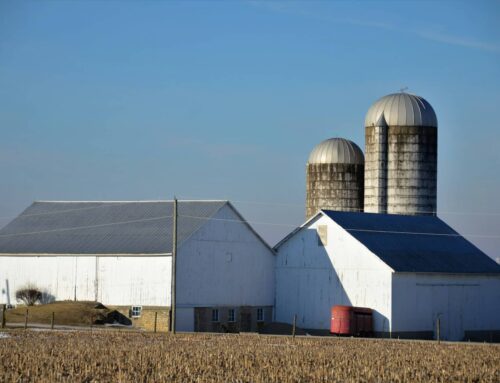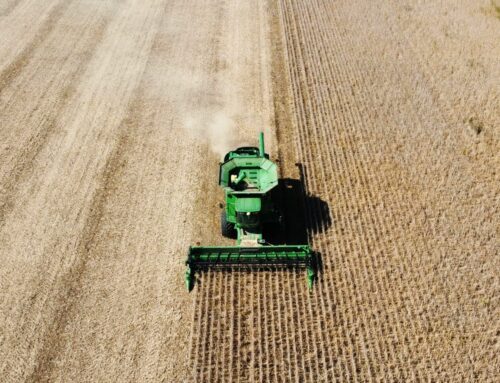USDA this week announced that farmers and ranchers across the U.S. could start signing up for federal subsidies to cover losses from 2018 and 2019 natural disasters. Details are sketchy, but the end result will likely be $3 billion in unbudgeted and potentially redundant income subsidies directed to select businesses. Perhaps more concerning than this cost estimate is that this is the latest step in creating a Farm Bill by Executive Branch fiat. One shaped mostly without the input of Congress and with virtually no spending restraints. Left unchecked, this shadow farm bill may outgrow and undermine the actual farm bill.
Creation of the Wildfire and Hurricane Indemnity Program Plus (WHIP+) is the latest chapter in a subsidy saga few saw coming. After 10 years without “emergency” farm income subsidies, Congress has whipped up two in 16 months. The combined $5.3 billion price tag is actually dwarfed by the Trump administration’s unprecedented decision, made in this same time period, to use Depression-Era legal authority to unleash $28 billion in “emergency” federal spending to compensate agricultural businesses for losses due to the trade war. This $33 billion total will actually exceed the cost of the annual $13 billion budgeted disaster programs for agriculture.
WHIP+ will whip producers and their lobbyists into a frenzy calling for more spending. Lawmakers directed funds for disaster losses in 2018 and 2019. But USDA is only guaranteeing farmers and ranchers with losses in 2018 will get 100 percent of the payment they are owed. Those affected in 2019 will get a check for 50 percent of the calculated payment due. Come January 1, 2020, USDA will send the other half, if funds are available (spoiler: they won’t be without additional appropriation). That will leave a lot of folks in states with only or mostly 2019 losses (including Illinois, both Dakotas, most of Iowa) quite upset, while states with exclusively or primarily 2018 losses (notably Florida, North Carolina, Kentucky, and the Secretary’s home state of Georgia) will be sitting pretty.
And plenty of new disasters can, and will, occur between now and the end of the year. History shows us as the frequency of disasters grow, the desire for a larger disaster bill grows as well. From its introduction in December 2018 to passage six months later the disaster bill went from $1.1 billion to cover hurricanes, wildfires, and Kilauea’s eruption to including the bomb cyclone, tornadoes, flooding in the Midwest and elsewhere, and a $3.0 billion price tag. So the pool of folks with 2019 losses is likely to grow.
The best development over the last few farm bills has been a move, however halting, away from federal micromanagement and mandates, toward risk management. Federally subsidized crop insurance is far from perfect, but it is perfectible. But the ad hoc spending moves taxpayers in the wrong direction. Payments will be made on harvested crops stored on farm, even though private insurance is already widely available. Crop insurance policies already pay out when a farmer can’t plant due to flooding (prevented plant). WHIP+ gives anyone who filed one of these claims a “bonus” payment of 10 or 15 percent based on the specific crop insurance policy. And if you didn’t even bother to buy highly subsidized crop insurance? No worries, you’ll get a WHIP+ payment covering up to 75 percent of your loss!
The Secretary’s implementation of both trade aid and ad hoc assistance also threatens to undermine a decades-long Congressional, and often Presidential, odyssey to focus farm programs on actual farmers with documentable needs. Under existing law, ag producers aren’t eligible for farm safety net payments if their adjusted gross income (income after deductions) exceeds $900,000. If you aren’t one of these millionaire farmers you can receive up to $125,000 from the Farm Bill programs. There are loopholes, but there are limits. And they’ve come from decades of debate. The biggest point of contention in the last farm bill was around closing these loopholes, and lowering the AGI threshold. Not a single Representative or Senator proposed INCREASING the limits.
In implementing both trade assistance and ad hoc subsidies, Secretary Perdue has practically abandoned limits. Under the first WHIP program (covering losses in 2017) an individual with an AGI of $900,000+ could receive subsidies if at least 75 percent of their income came from farming, ranching, or forestry-related activities. And instead of only $125,000, this new class of subsidized farmer could get up to $900,000! Under trade assistance round one, Secretary Perdue kept the AGI test, but doubled the payment limit to $250,000 ($125,000 for crops and $125,000 for livestock/dairy). In the 2019 emergency supplemental, lawmakers retroactively applied the 75 percent of income from farming test to the round one trade assistance. So the Secretary did that and then applied it in round two of trade aid while again doubling the limit to $500,000, up to $250,000 from each pool of crops, livestock, or the new one “specialty crops” (tree nuts, cherries).
The farm bill passed at the end of 2018 with a five-year authorization, but not even a year into the bill Secretary Perdue is creating an Executive Branch Shadow Farm Bill that takes us back to the bad old days shoveling cash willy-nilly instead of risk management. This is unacceptable. Taxpayers and American farmers can’t afford to have Washington dictates replace individual responsibility and economic liberty.










